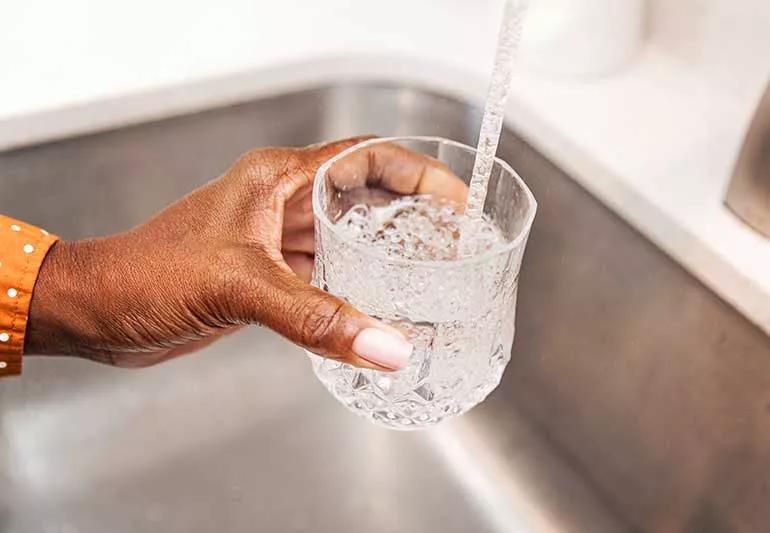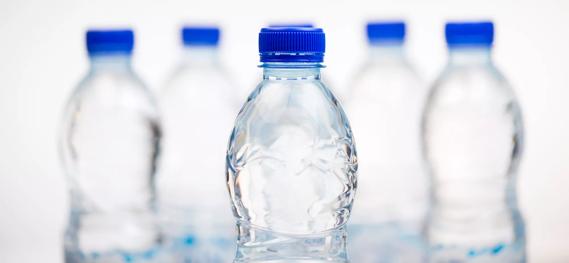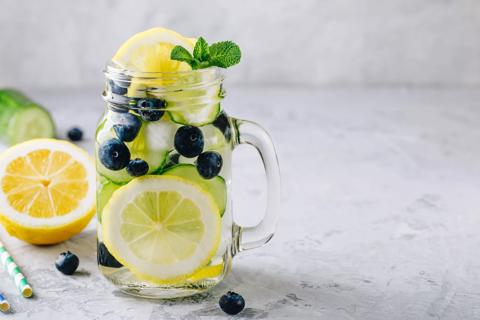Your home’s tap water should be safe to drink, but you can install filters and run tests to be sure

You start to feel thirsty, so you walk into your kitchen, flip a handle and … instantly, your glass is full with cool, refreshing water.
Advertisement
Cleveland Clinic is a non-profit academic medical center. Advertising on our site helps support our mission. We do not endorse non-Cleveland Clinic products or services. Policy
Certainly one of the best advancements in living healthy has been the infrastructure that provides homes and communities with tap water. From washing your clothes and washing your dishes to washing yourself, indoor plumbing and public water systems are a modern-day wonder. But is the liquid that flows freely from your tap at home really safe to drink? Probably, say most experts.
You might get a different answer if you live in Flint, Michigan; Jackson, Mississippi; or Newark, New Jersey, where authorities found unsafe, high levels of lead in public drinking water.
Residents of Wilmington, North Carolina, have reason for concern, too. Tests there showed high levels of lab-made chemicals known as PFAS in their public water supply. These “forever chemicals” don’t break down and may increase the risk of cancer, liver damage and infertility.
Fortunately, these incidences — while alarming — are not the norm. Globally, the United States has one of the safest, most reliable drinking water systems. Functional medicine specialist Erik Modlo, MD, explains what you need to know about tap water and shares steps you can take to make sure your H2O is as safe as possible.
“The U.S. Environmental Protection Agency (EPA) sets standards for the levels of contaminants allowed in public water systems,” says Dr. Modlo. “Most Americans have safe drinking water.”
Advertisement
Still, an Environmental Working Group survey found that half of survey respondents believe tap water isn’t safe, and 40% won’t drink it. Another study found that as many as 1 million Americans each year get water from public systems that violate EPA safe drinking water standards. Importantly, this study noted that violation rates are “several times higher at systems serving low-income areas and communities of color.”
Millions of Americans get their tap water from public water systems. This water comes from rivers, lakes and reservoirs. In some areas, pumps bring up water from sources deep underneath the ground.
Public water systems collect and treat this water for approximately 90 different contaminants, including:
Tap water from public water systems is treated and tested to make sure it’s safe. This isn’t the case for well water. “Well water comes from a person’s private land,” explains Dr. Modlo. “Because the EPA doesn’t regulate well water, the well owner is responsible for testing for contaminants and taking care of any issues.”
Hard water has higher levels of dissolved calcium and magnesium than soft water. These minerals can make your dishes spotty and be hard on your skin, hair and water pipes. But hard water is safe to drink.
Hard water is more common in public water supplies that rely on groundwater. “Minerals from rocks and soil dissolve in the underground water,” Dr. Modlo further explains. You can install a water softener in your home to remove these minerals.
The EPA requires all public water systems to share annual Consumer Confidence Reports (CCR) with customers by July 1 of each year. These water quality reports list the contaminants in your tap water and their levels at the time of testing. You can find this report online or get it in the mail with your water bill. You can also use the EPA’s Find Your Local CCR search function.
If your water supply has high levels of contaminants, the company must explain:
The CCR also tells you the source of your water supply. Your water supplier must notify you anytime your water becomes unsafe to drink or cook with.
If you’re concerned about the safety of your family’s drinking water, these tips can help:
Advertisement
An estimated 1 in 3 American households has a water filtration system. These systems can remove some harmful chemicals and make your water taste better. Filters don’t remove bacteria or viruses. There are different types, including whole-house water filters and those that attach to faucets.
A filter’s NSF certification tells you which contaminants the filter removes. The NSF develops public health standards for products like water filters. Filters with smaller holes or pores keep out more contaminants.
“Reverse osmosis water filtration is one of the better systems for removing contaminants like arsenic, lead and parasites like Cryptosporidium,” says Dr. Modlo. With this system, a holding tank collects filtered water after a semipermeable membrane filters out contaminants.
Even with a clean report from your local water company, it’s a good idea to test your home’s water once a year. “Lead and other contaminants can enter your water supply from pipes inside your home, not the public water supply,” adds Dr. Modlo, who notes this problem is more common in homes with older water pipes.
You can buy home water testing kits online or at your local home improvement store. The EPA recommends using a state-certified drinking water laboratory. Fees range from $15 to hundreds of dollars, depending on how many contaminants you test for.
Advertisement
To find a certified lab:
These steps can also reduce the amount of contaminants in your home’s tap water:
Water remains one of the healthiest ways to stay hydrated. How much water you should drink every day depends on your activity level, body size and even the climate where you live. Tap water is cheaper and better for the environment than bottled water. Plus, tap water from public sources has fluoride, which prevents tooth decay.
Advertisement
“It’s fine to drink tap water. But I encourage people to know what’s in their tap water because you don’t want to introduce more toxins and germs into your body,” advises Dr. Modlo. “Getting your tap water tested is an easy step to protect your family’s health.”
Learn more about our editorial process.
Advertisement

Consumption needs vary based on activity, weather, metabolism and other factors

A glass of lemon water in the morning can help with digestion and boost vitamin C levels, and may even help get you into a better routine

Mold and bacteria in your reusable water bottle can cause health issues like infections, respiratory issues and allergic reactions

Sitting in the dry heat may help reduce stress, improve heart health and relieve pain

Adding salt to your water isn’t going to have measurable benefits — but there may be plenty of downsides

Drinking untreated water can have dangerous consequences, like bacterial infections

Although it adds to your hydration, this water may be pushing you over the limit of the daily recommended dosage of caffeine

If you’re trying to drink less soda or fewer sugary drinks, flavored water can be a delicious and healthy alternative

Babies can get congested easily, but you can calm their cough by keeping them hydrated, using nasal drops and running a humidifier

Weight loss may cause loose, sagging skin and muscle loss to your rear

Several conditions, like vitiligo and fungal infection, can cause a loss of pigmentation, leading to white spots or patches on your skin